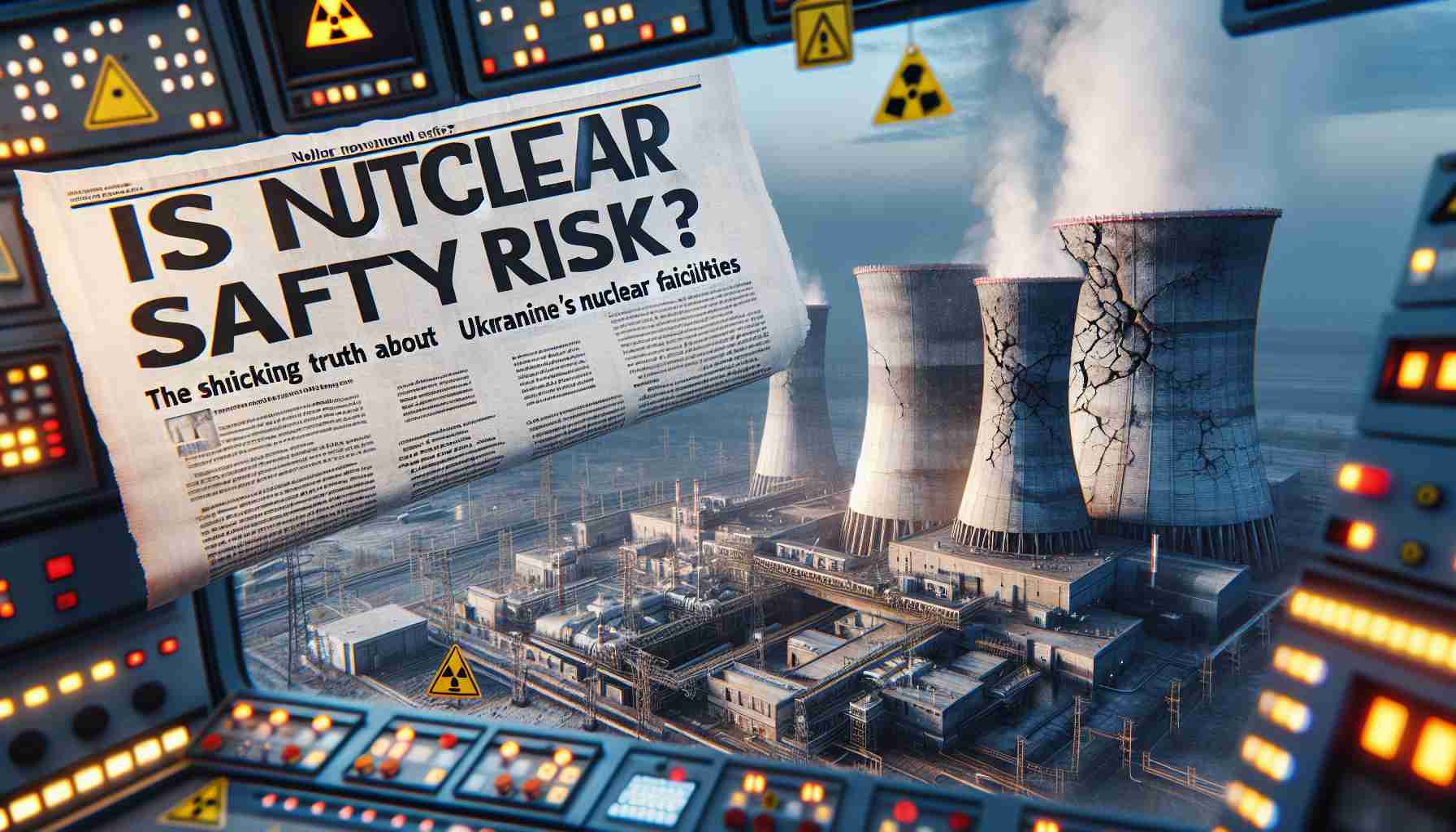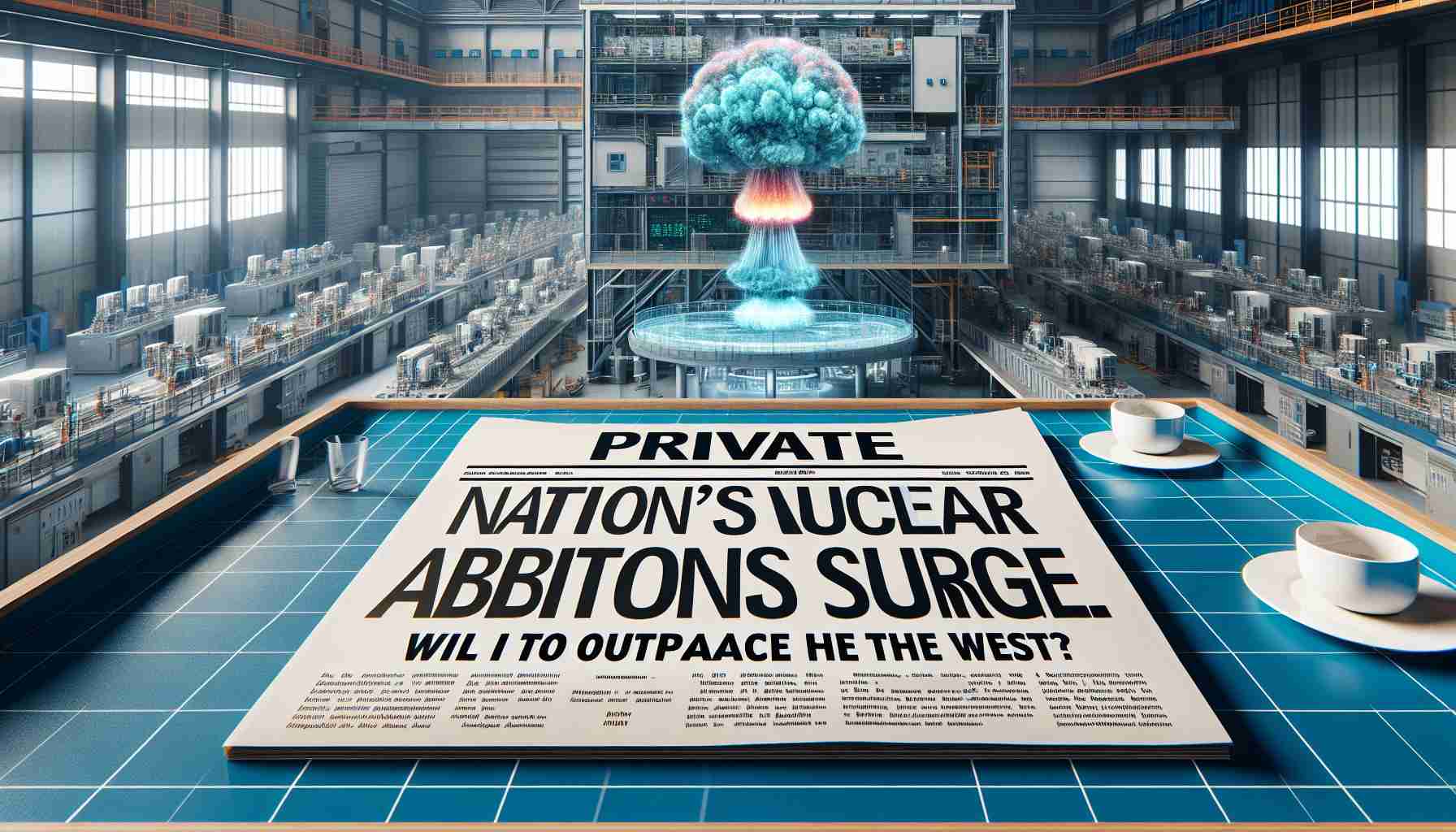In a pivotal examination of the ongoing war in Ukraine, a newly released report sheds light on the actions of the International Atomic Energy Agency (IAEA) amidst escalating conflict. This situation marks a rare moment in history, where military action has resulted in the occupation of another nation’s nuclear sites, and the implications are staggering for international nuclear safety standards.
On January 23 from 12:00 to 13:00 (GMT+2), Alexander Nikitin from The Bellona Foundation will unveil findings from this insightful report. It evaluates how effectively the IAEA has responded to the urgent needs of Ukraine’s nuclear facilities since the war broke out in 2022. The report details the IAEA’s significant challenges, particularly following Russia’s seizure of critical sites like the Chernobyl and Zaporizhzhia Nuclear Power Plants.
This analysis not only assesses the IAEA’s operational authority during war but also highlights the dynamics between its leaders and representatives from the nations involved. The report calls for timely conversations on enhancing nuclear safety protocols in today’s tumultuous political climate.
As Bellona emphasizes, understanding the current failings and successes of international agencies like the IAEA is crucial. Nikitin’s presentation will delve into both findings and recommendations, encouraging public engagement through a live Q&A session. Attendees can reserve spots and submit questions in advance, promising a deeper exploration into this pressing issue.
Global Consequences of Nuclear Oversight in Conflict Zones
The conflict in Ukraine has ushered in a precarious chapter for global nuclear safety, raising critical questions about the effectiveness of international oversight in contested environments. The international community must grapple with the reality that military conflicts increasingly threaten nuclear infrastructure, posing risks that extend far beyond national borders. The occupation of Ukraine’s nuclear sites underscores the urgent need for robust protective measures and a reevaluation of safety protocols under extreme conditions.
A historical perspective reveals that about 30% of the world’s nuclear reactors are located in conflict-prone areas. This statistic speaks volumes about the potential for future crises similar to those in Ukraine. If left unchecked, the destabilization of nuclear facilities can lead to catastrophic environmental consequences, including radiation leaks that affect air, water, and soil quality across vast regions.
Furthermore, this situation may drive a new trend in global nuclear policy, compelling countries to reexamine their own stockpiles and safety measures in light of geopolitical tensions. The ramifications of these developments extend to the global economy as well, as uncertainty surrounding nuclear security can affect energy markets and investment in nuclear technology.
As society increasingly prioritizes sustainability, the intersection of conflict and nuclear energy must prompt urgent discussions about the long-term significance of such vulnerabilities, ultimately shaping the future of nuclear energy in our increasingly uncertain world. This dynamic remains a pivotal area for scholarly research, policy development, and public discourse to ensure a secure and sustainable energy future.
Is the IAEA Doing Enough? Unpacking Nuclear Safety Risks in the Ukraine Conflict
Understanding the Role of the IAEA Amid the Ukraine Conflict
In light of the ongoing conflict in Ukraine, the International Atomic Energy Agency (IAEA) has found itself at the epicenter of a significant military and humanitarian crisis. As military hostilities have encroached upon nuclear facilities — notably the Chernobyl and Zaporizhzhia Nuclear Power Plants — the IAEA’s mission to ensure nuclear safety has become more critical than ever. A recent report by Alexander Nikitin from The Bellona Foundation reveals crucial insights regarding the IAEA’s response and the challenges it faces in this unique circumstance.
Key Findings from the Report
The report highlights several vital aspects concerning the IAEA’s role during the Ukraine war:
– Operational Challenges: The IAEA faces significant barriers in its operational authority in a conflict zone. With the occupation of Ukrainian nuclear sites, the agency’s ability to implement its safety protocols effectively is severely compromised.
– Interactions Among Nations: The dynamics between IAEA leadership and representatives from the countries involved in the conflict are crucial in shaping responses to nuclear safety threats. Understanding these interactions can provide insights into the geopolitical implications for nuclear safety oversight.
– Call for Enhanced Protocols: The report emphasizes an urgent need for timely discussions on improving nuclear safety standards in light of evolving political landscapes. The current methods may be inadequate given the heightened risks in active war zones.
Upcoming Presentation and Public Engagement
On January 23 from 12:00 to 13:00 (GMT+2), the Bellona Foundation will conduct a live presentation led by Alexander Nikitin. This event will detail the report’s findings and offer an opportunity for public engagement through a Q&A session. Attendees are encouraged to reserve their spots and submit questions ahead of time, ensuring a lively and informative discussion on these pressing issues.
Pros and Cons of IAEA’s Current Approach
# Pros:
– The IAEA remains a central authority on nuclear safety, striving to adapt its procedures amidst unprecedented challenges.
– The organization facilitates international dialogue regarding nuclear risks and safety strategies.
# Cons:
– Limited access to occupied territories hampers comprehensive assessments and response strategies.
– Complex geopolitical tensions may undermine cooperative efforts essential for effective nuclear oversight.
Future Trends and Predictions
The geopolitical climate is likely to continue influencing nuclear safety protocols globally. Increased military conflicts around sensitive nuclear sites may necessitate the development of innovative approaches to monitoring and engagement. Additionally, enhanced technology for remote monitoring could become a priority for the IAEA and other safety agencies to maintain oversight in conflict zones.
Conclusion
As the situation in Ukraine evolves, the role of the IAEA will be under intense scrutiny, both for its successes and limitations. The insights gathered from upcoming discussions will be pivotal in shaping future policies and protocols to ensure the safety of nuclear facilities worldwide. The IAEA faces significant challenges ahead, but proactive engagement and international cooperation are essential for enhancing nuclear safety in turbulent contexts.
For those interested in further exploration of nuclear safety and international responses to the Ukraine crisis, visit Bellona Foundation.
The source of the article is from the blog cheap-sound.com



